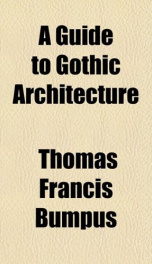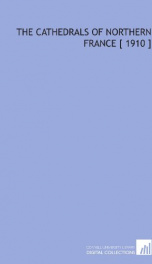a guide to gothic architecture

Purchase of this book includes free trial access to www.million-books.com where you can read more than a million books for free. This is an OCR edition with typos. Excerpt from book: CHAPTER III THE ANGLO-NORMAN AND TRANSITIONAL STYLES, 1080-1190 Massive character of the Norman styleSome Anglo-Norman CathedralsTheir plans and general featuresVarious types of columnsRound towersVaulted chancelsSculpture' Gradual enrichmentThe transition from the Round to the Pointed Arched styleCauses which led to the TransitionIts progress in France, Germany and EnglandIncreasing lightness in construction and detailInfluence of the Cistercian OrderThe retro-choir of Chichester CathedralList of the most remarkable English works of the period. The multitude of great architectural works erected at the junction of the eleventh and twelfth centuries, and the vast scale on which the majority of them are designed, combined wih the immense solidity of the walls, and the massive character of all structural features, are such as to awaken a feeling of astonishment at the indomitable energy and the command of almost inexhaustible resources such buildings imply, and of admiration for the religious zeal which dictated the devotion of so much labour and treasure and thought to the honour of the Most High, and the sen-ice of His Temple. Nearly every cathedral and great abbey was rebuilt on a stupendous scale, new cathedrals and new abbeyswere founded, and churches of all grades, from these vast temples down to the smallest village church, were erected throughout the length and breadth of the country. In fact, almost every one of our existing cathedrals is, either in its ground-plan or its actual fabric, an outward and visible sign and token of the occupation of England by the Normans, and of the advanced civilisation introduced by them. A hasty survey of our cathedrals will verify the assertion, and serve to bring home the fact, the importance of which is hardly ...
Users who have this book
Users who want this book
What readers are saying
What do you think? Write your own comment on this book!
write a commentif you like a guide to gothic architecture try:
Do you want to read a book that interests you? It’s EASY!
Create an account and send a request for reading to other users on the Webpage of the book!



